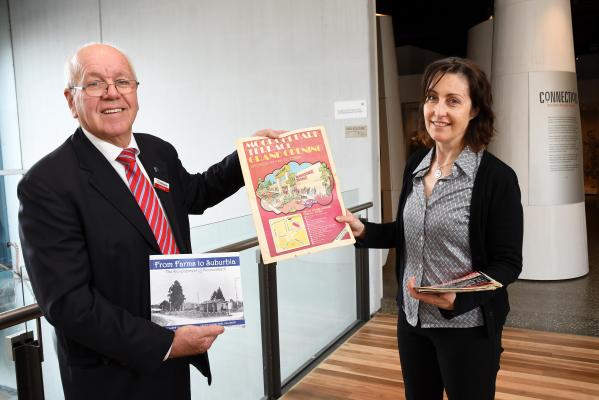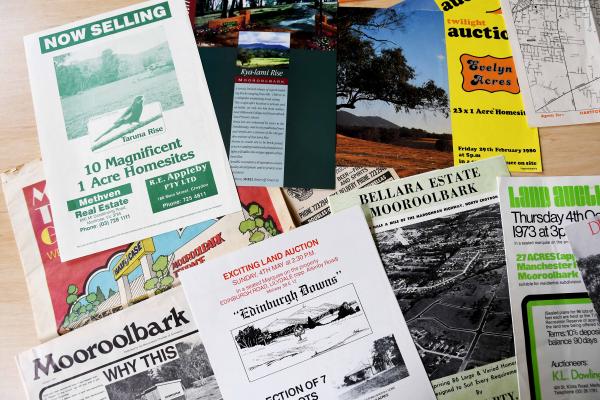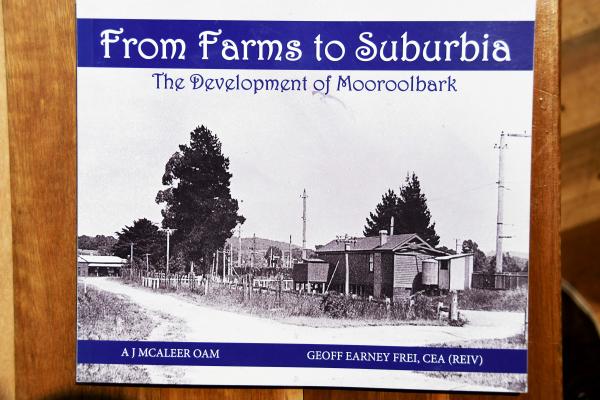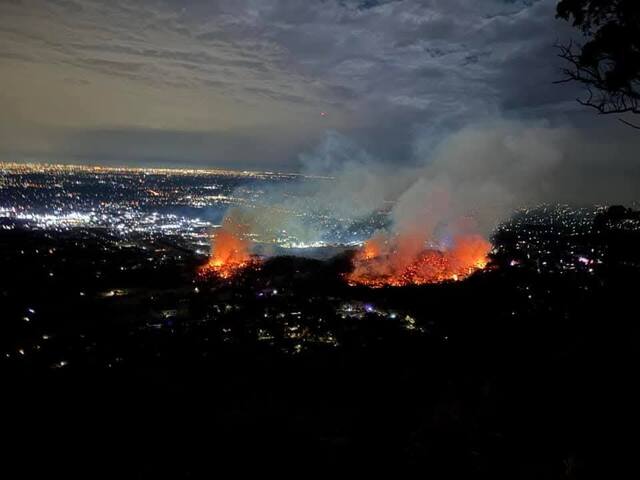Geoff Earney has been in the Mooroolbark real estate scene for 50 years and over that time has witnessed many changes, including the development of the land.
About five years ago he was cleaning out a draw at his office and found a number of brochures, booklets and pamphlets of past subdivision sales.
“This collection only happened over time. So whenever we deal with a subdivision or something, we take the brochure and put it in the draw and that’s what we did, we put everything in the draw,” Mr Earney said.
With the collection he has formed over the years, dating back to the 1960s, Mr Earney decided to donate the items to the Yarra Ranges Regional Museum.
“The material I’m giving the museum is all original from when Mooroolbark was developed, in that really heavy development time from late 1958 right through until probably 1988,” he said.
“I wanted to make sure that it was going to be put in some sort of pictorial so that people could actually see what we had collected and what was there, rather than it just sitting in a draw and it being of no use to anybody.”
Mr Earney chose the Yarra Ranges Regional Museum to be the custodian of the collection because he knew it would be in a safe place where future generations could view how Mooroolbark changed.
Collection curator for the museum Ruth McLean said even though there are no immediate plans for the collection, it will form an important part of the museum’s archives.
“Our collection exists because of the generosity of people like Geoff and things like this in particular are a great representation of the changing shape of the land.
“Looking at the pictures of how the area has developed and changed over the years is what the museum’s all about, showing these stories of the Yarra Ranges including Mooroolbark.”
Mr Earney said just by looking at two aerial photographs he has in his office, one taken in 1958 and the other in 1988, it shows just how big the development of the land was.
“It’s just kept growing and growing and growing. At one stage there, as it says in one of the brochures, it’s Melbourne’s fastest growing suburb and that’s really what it is, it’s growing very quickly and the station has been the main draw card for that,” he said.
“It’s gone from a huge development in the early ‘70s when the Coles shopping centre was opened and then in the ‘80s when The Terrace was opened however, I think it’s all gone stagnant.”
When Chirnside Park Shopping Centre opened, Mr Earney said The Terrace Shopping Centre didn’t develop with the times.
“Mooroolabrk became a small cousin to it and there wasn’t the attraction or the customers in Mooroolbark to keep those bigger retailers, they were going to somewhere like Chirnside with a larger pool of people to be able to work with.”
Although the shopping centre may not have been a draw card, Ms McLean said it is interesting to see how they advertised the land.
“It’s interesting as you look through the various items, the way they promote the different areas, the features that they highlight,” she said.
“The fact that the electricity is connected or that it’s close to the station or whatever it is, those selling points like ‘nestled in the foothills of Mount Dandenong’, that sort of messaging, it says a lot about the area at that particular time.”
The collection will be documented and catalogued before being put online for people to see.
If people have any interest in seeing the collection in person, they can book an appointment with the Yarra Range Regional Museum.
Otherwise, pick up a copy of Mr Earney’s book about Mooroolbark called ‘From Farms to Suburbia – The Development of Mooroolbark’. Copies are available at Professionals Mooroolbark.









